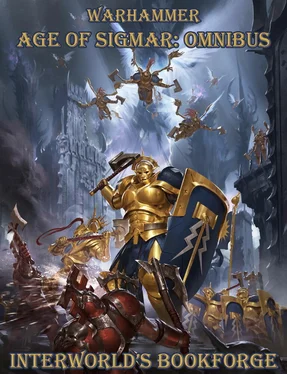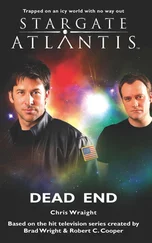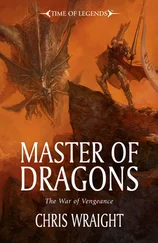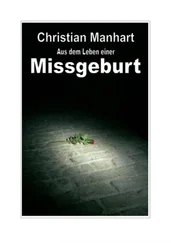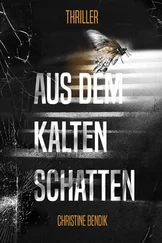It took another day’s journey, beset by smaller nurgling assaults, before the Krelstrag reached the outer gates. They emerged on a steep slope, less than a league from the base of the Great Weld. The petrified forest with its agonised forms was now at their back, but the route to the Weld was strewn with boulders, fuzzy with mould, and the ground was a carpet of rock-devouring lichen. If there were daemons nearby, they did not attack. The Fyreslayers moved on.
As dusk fell, the army reached its destination.
Thrumnor gazed up its height. The size of the Weld was overwhelming. A force beyond reckoning had brought multiple volcanoes together, fusing them into a single giant, standing alone.
‘ And Grimnir desired an anvil for his work ,’ Thrumnor intoned. ‘ And he essayed first one mountain, and then another, and they were all too weak, shattering to dust at the first blow of his hammer. ’ His voice echoed against the cliff face. He faced the Krelstrag, his back to the Weld, and recited the tale they all knew, but had never felt so visceral until this moment. ‘ And because the mountains on their own were too weak, Grimnir gathered a great number together, and he welded them into one with the fury of his making. From that great forging, he had his anvil. ’
Thrumnor stopped. He turned around again to regard Grimnir’s anvil with a mingling of awe and horror. Seen from the Forgecrag, the Great Weld was a distant silhouette, and its proportions did indeed resemble an anvil. Now he could see the evidence of Grimnir’s work. The outlines of the individual volcanoes were still visible. Clefts running from peak to base, their gaps filled with basalt, marked the shapes of the mountains that had been.
There was something else, though, about the configuration of the lines. Their slopes, their angles and their parallels were suggestive of something else. But the pattern extended beyond Thrumnor’s sight, and he dismissed it.
What he saw was a wonder, and Thrumnor gloried at the power of Grimnir.
But there was horror too. Even in the dim light, he could clearly see the extent of the blight on the towering walls of the Great Weld. It was a stain, one that appeared to move and spread if Thrumnor stared at it long enough. The shape of the stain was even worse.
‘No,’ he said. ‘This cannot be.’
‘You see it too,’ said Rhulmok.
The form of the stain was a flow, as if it were lava pouring from the peak of the Great Weld. It widened as it approached the base. Thrumnor traced the descent with his eyes, and saw new meaning in the plague on the land.
Rhulmok spoke the words Thrumnor could not bring himself to articulate. ‘The Weld is the core of the blight,’ he said.
‘No,’ Thrumnor said, as if denial could banish the obscenity. Ground so sacred could not truly be the origin of the corruption. The Great Weld had been attacked. It too was a victim of the Chaos Gods.
Dorvurn said, ‘We must pass beyond the Weld.’
‘ No! ’ Thrumnor cried. ‘Grimnir’s hammer awaits us on the peak. A great forging is to be ours.’
The doubt in Rhulmok’s face was now present in Dorvurn’s. The distance Thrumnor had felt growing between himself and the runesmiter now became a schism. He would not permit Rhulmok’s lack of belief in his vision to divert the Krelstrag from their destined path.
‘The Weld is under attack,’ Thrumnor said. ‘But its heart is still pure.’ He spoke from faith rather than knowledge. He approached the wall now. ‘Bear witness with me,’ he commanded Rhulmok.
The runesmiter hesitated. The concern Thrumnor saw in his eyes was beyond bearing. With a great effort, Thrumnor prevented himself from laying his hands on Rhulmok and dragging him to the wall. After a moment, Rhulmok joined him.
‘And if you are wrong, what then?’ he asked.
‘I am not wrong,’ Thrumnor growled.
Rhulmok used his latch-axe to scrape away the devouring mould, exposing the rock of the Weld. He and Thrumnor placed their hands and foreheads against the stone. Rhulmok, Thrumnor knew, would be reaching out to the tunnels in the Weld, reading the veins and passages, seeking to know whether the stone would consent to part before his will. Thrumnor listened for the beat and rush of the magma. He needed to gauge the extent of its rage.
Thrumnor had barely begun to chant a prayer of kinship to the Weld when he recoiled. So did Rhulmok, and at the same instant.
Thrumnor’s head and palms burned as if the rock face had turned molten. ‘The Great Weld rages,’ he said to Dorvurn. ‘It feels the plague attacking it, and all inside is wrath. Holy wrath.’
Rhulmok nodded, gazing at his own hands in alarm. ‘There is so much pain,’ he added.
‘But the heart of the Great Weld is not corrupt,’ Thrumnor insisted.
Rhulmok hesitated, then nodded.
‘Then we climb,’ Dorvurn declared. He looked up.
The clouds flashed green, reflected from what thundered on the peak of the Weld.
At first glance, the walls of the Great Weld appeared vertical. Though they were very steep, a path could be made out. The Fyreslayers marched up a long, inclining ledge that had once been a mountain’s slope. Sometimes it was wide enough for the duardin to march three abreast. Elsewhere, it narrowed to the point that the magmadroths were barely able to navigate it, even with their claws digging deep through the tainting mould and into the stone.
The rock blight became thicker as they climbed, and more active. It pulsed and scraped. The endless whispering of dissolving stone sounded in Thrumnor’s ears like a daemon’s mockery. That this great wonder, this holy monument, should be so desecrated made his fists tighten in fury. He longed to strike out at the bearers of this plague.
Nurglings cavorted along the cliffs, scrabbling over each other, sometimes falling like overfed ticks to burst on the ground below. In small groups they attempted to harry the Krelstrag, and they were dealt with savagely. They could not summon the numbers to attack in the concentrated manner they had in the tunnels, so they taunted and laughed.
Thrumnor vented his rage on those who dared come within reach of his staff, but it brought no satisfaction to smash the lowliest of daemonkind. They were not the ones who had created the blight. He might as well be striking at the mould.
He did once, snarling, then caught himself, even more angry that he had succumbed to his frustration. As he turned back to the path, he heard a low, deep buzzing. He looked up to see a swarm of huge insects descend from the heights of the Weld. Ragged wings supported drooping sacks of bodies. Serpentine trunks hung from their heads. The sound of the rotflies’ wings crawled into Thrumnor’s ears and into his mind. His spine ached. The swarm flew down the path as if to knock the Fyreslayers off the side of the slope. The host of the Krelstrag responded before the first rotfly struck. Vulkite berzerkers hurled throwing axes at the daemon insects. A single blow from a fyresteel blade would have done little against the flies, but the axes arced upwards in the hundreds.
The daemons flew into a scything wall. Axes cut wings to shreds and burst swollen bodies. A score of the creatures tumbled into the dark below. Screeching hatred, the rest of the swarm spread over the Krelstrag line. The abominations fell on the duardin warriors, tearing their bodies apart with the jagged points of their chitinous limbs. Fyreslayers avenged their kin before the insects could fly away with their victims, attacking each monster with wrath and steel. The magmadroths smashed them from the air.
Thrumnor struck at the daemons that flew near him, but his blows with the runic iron were not enough. He longed to punish the rotflies with a burst of lava from within the Weld. Their presence was still another grievous insult to the sacred anvil. His anger grew, but before he lost himself, Rhulmok called his name and drew him back.
Читать дальше
